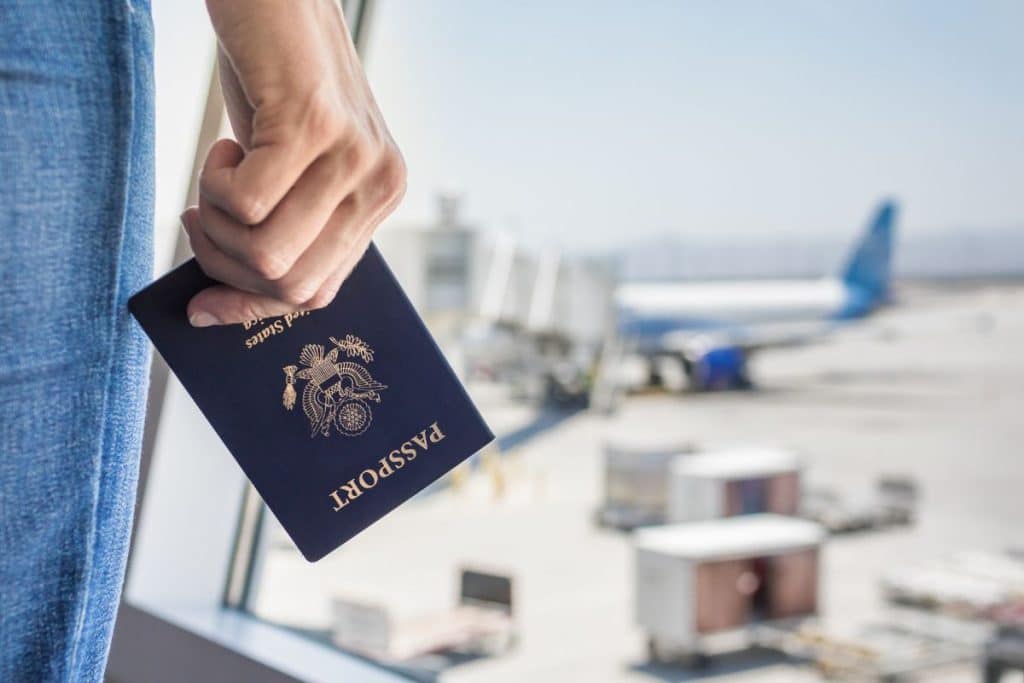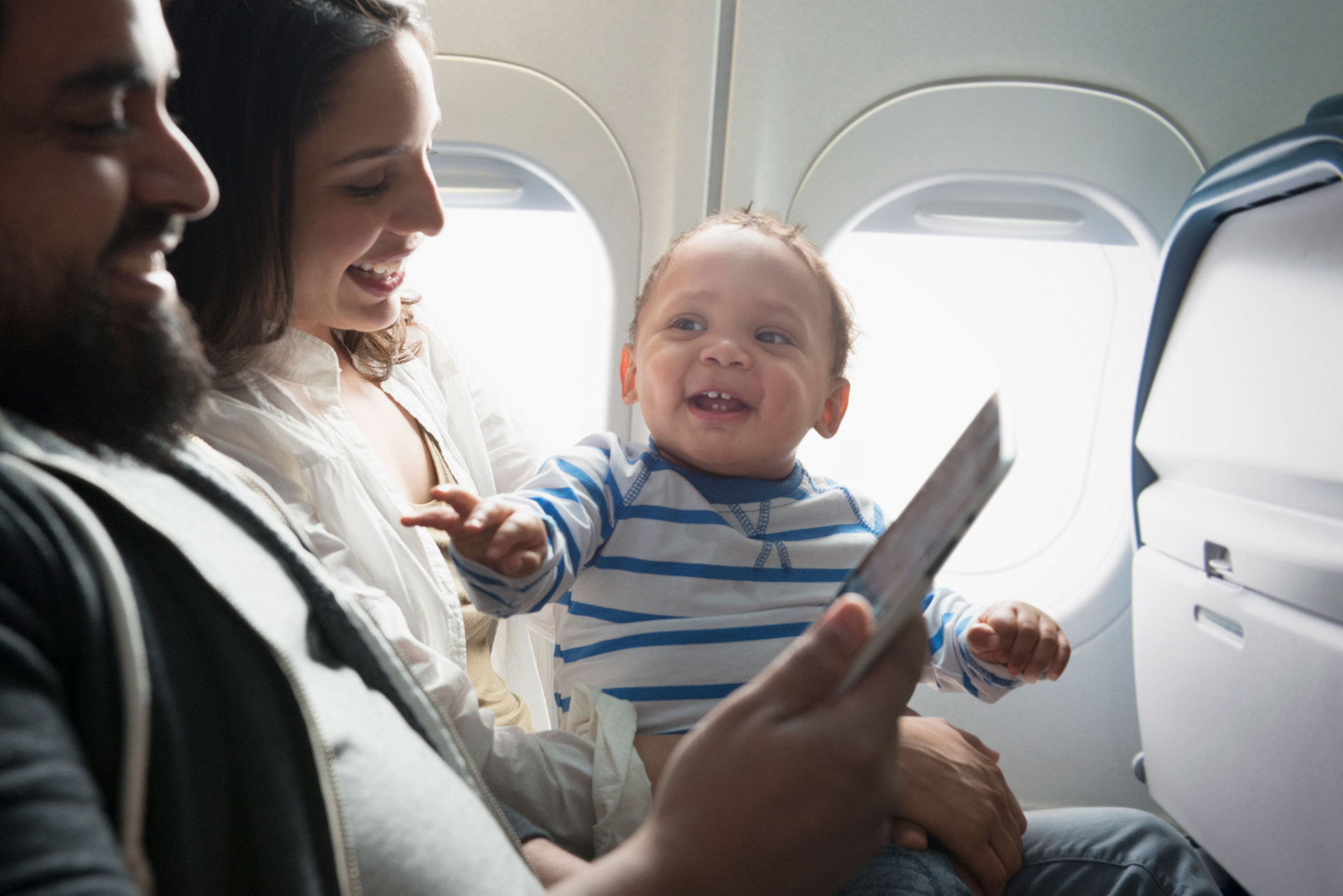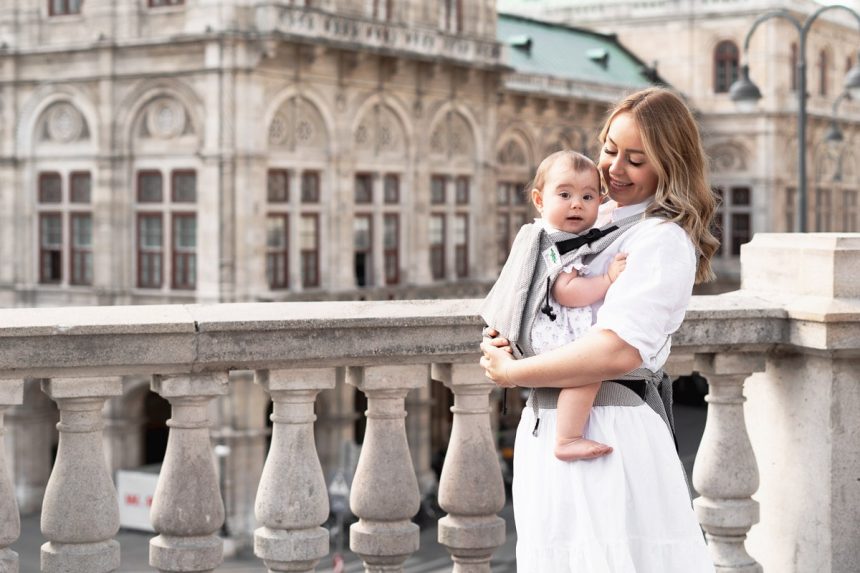Embarking on international travel with an infant can be quite the adventure, presenting unique challenges and opportunities.
Being well-informed, conducting thorough research, and preparing in advance are key steps to ensure a smooth and enjoyable trip with your little one. From understanding airline regulations and securing necessary documents to packing essential items and navigating potential jet lag, careful planning can greatly enhance your travel experience.
This comprehensive guide covers all aspects of international travel with a baby, offering valuable insights into booking flights, organizing documents, obtaining travel insurance, and mitigating jet lag effects.
For additional travel tips and updates from TPG, don’t forget to subscribe to our daily newsletter.
Get your baby’s passport
Before delving too deeply into planning an international trip, securing your baby’s first passport is essential.
Additionally, ensure that every member of the family holds a valid passport. Remember, U.S. passports for children under 16 expire after five years, unlike adult passports which last for 10 years. It’s crucial to check the expiration dates of everyone’s passports, as many countries require three to six months of validity for entry. Consequently, child passports effectively have a shorter validity period of 4 1/2 years.

To obtain a passport for your baby, follow these primary steps:
- Obtain their birth certificate.
- Determine where to apply for the passport.
- Schedule an appointment. You’ll need to visit the passport office in person, accompanied by your baby.
- Capture their passport photo. This can be challenging, but ensure your baby is looking directly at the camera with a natural expression. The background should be white, and the photo must meet specific size and composition requirements.
- Gather the necessary paperwork, including Form DS-11, your baby’s birth certificate, photocopies of all documents, passport photos, valid IDs for parents, photocopies of parental IDs, and the required fees.
- Attend the appointment in person with both parents present. If one parent is unable to attend, complete and bring parental consent form DS-3053 along with a copy.
Get your baby Global Entry
If you’re a Global Entry member, keep in mind that the service cannot be utilized as a family if your young children are not enrolled. Therefore, it’s advisable to begin the application process for your baby. Alternatively, if your entire family wishes to enroll, consider applying together. This approach simplifies expiration dates and renewals, ensuring everyone’s memberships are aligned.
It’s worth noting that while children aged 12 and under are not required to have their own TSA PreCheck number to accompany their parents through expedited security lanes, the same does not apply to Global Entry, which is used for reentry into the United States.
Check with your doctor
Consult your pediatrician to determine when it’s safe for your baby to fly.
According to Dr. Jenny Yu, medical director at Healthline, while babies typically develop their immune system around 1 month, most pediatricians suggest waiting until 3 to 6 months for travel. Premature babies may require a longer waiting period.
For international travel, consider any additional vaccines your baby may need, especially when visiting emerging countries. Begin by checking the recommendations from the U.S. Centers for Disease Control and Prevention regarding vaccines for both adults and babies. Then, discuss with your pediatrician to determine the best course of action for your family, baby, and travel plans.
Additionally, inquire with your doctor about whether your baby can use sunscreen or insect repellent and seek advice on how to protect your baby and family from tropical or waterborne diseases, COVID-19, and other potential infections, taking into account your specific destination.
Pick the right destination
No matter the destination—whether it’s an exotic adventure in Asia, a family visit in Europe, a tropical getaway in the Caribbean, or a safari in Africa—traveling with a baby is feasible as long as you and your family feel comfortable with the idea. Prioritize selecting a destination that brings you joy rather than anxiety or stress when thinking about the journey and the experience with your baby.
When choosing a destination, consider factors such as the activities you wish to engage in and whether the location is family-friendly. Additionally, think about logistical aspects like the language spoken, climate conditions, and availability of local transportation, as these can influence whether the destination is suitable for your family’s needs and preferences.
Book tickets
The options for flying abroad with your baby depend on their age. Here are some considerations:
- Lap infant: Babies under 2 years old can travel on the lap of a ticketed adult. Airlines may charge 10% to 30% of the adult fare or just taxes and fees for a lap infant, while some airlines offer this service for free. Check with the airline for specific policies and fees. Most airlines allow a stroller and car seat to be checked for free, and you may also have allowances for additional baggage.
- Bassinet for lap infant: Many airlines offer bassinets on larger aircraft for infants. These are usually provided free of charge but are subject to availability and are allocated on a first-come, first-served basis. Request a bassinet soon after booking to secure one for your baby.
- Extra seat with car seat or restraint for babies 2 years and up: Children over 2 years old must have their own seat, which may be available at a discounted rate. Children weighing over 44 pounds may not require additional restraints, but for those weighing less, a certified child restraint or car seat is recommended.
- Additional seat with car seat or restraint for babies under 2: Babies under 2 can also have their own seat. The FAA recommends using an approved harness or certified child restraint for added safety during turbulence and takeoff/landing.
Keep in mind that policies regarding car seats, bassinets, and harnesses vary by airline and class of service. Some airlines have restrictions on seating for families with babies, such as prohibiting seating in exit rows or certain cabin sections.
When deciding whether to purchase a seat for your baby, consider factors such as comfort and affordability for your family. Sometimes, the price difference between a lap ticket and a separate seat may not be significant and could enhance the overall comfort of the journey.
Organize documents, including visas and COVID-19 forms
In addition to passports, several other documents are essential for international travel. Here’s what you need to consider:
- Visa requirements: Check if you and your baby need a visa to enter the country you’re visiting. Research visa regulations and apply for them in advance if necessary.
- Child Consent Form: If you’re traveling alone with your baby and without your partner, look into completing a Child Consent Form to authorize the trip.
- Health documents: Ensure you have proof of vaccinations, complete any required health forms, and fill out entry forms as necessary. Some countries may also require COVID-19 tests for entry, so be prepared to take them if needed.
- Mask requirements: Understand the mask policies for your airline and destination. While U.S. airlines generally require masks for children aged 2 and up, international airlines may have different age requirements. Stay updated on the latest regulations, as they can change rapidly.
- Stay informed: Keep track of any changes in travel regulations and requirements leading up to your trip, as rules may evolve, especially during the ongoing pandemic. Check for updates when booking your trip and again before departure to ensure you have all necessary documents and comply with current regulations.
Understand luggage rules
Each airline has its own set of rules regarding luggage allowances for international travel, especially when flying with infants or children. Here’s what you need to know:
- Checked luggage: Most airlines allow you to check a stroller and/or car seat free of charge. Some may also offer additional checked luggage allowances for infants and children occupying their own seats. It’s essential to check the specific rules of your airline regarding checked baggage allowances.
- Carry-on luggage: Many airlines permit both lap infants and children aged 2 and above to have a carry-on item. This could include essentials like diaper bags or small backpacks. However, the size and weight restrictions may vary, so it’s advisable to check with your airline beforehand.
- Additional items: Some airlines may provide additional allowances for items such as baby food, formula, or breast milk. Be sure to inquire about any specific requirements or restrictions regarding these items.
- Contact the airline: If you’re unsure about the luggage rules or need clarification, don’t hesitate to contact the airline directly before your trip. This way, you can avoid any surprises or additional fees at the airport.
By understanding the luggage policies of your airline and planning accordingly, you can ensure a smoother travel experience with your baby or child.
Know the rules for breast milk and formula
Thanks to the Friendly Airports for Mothers Improvement Act, all major and medium-sized airports across the United States are now equipped with designated, lockable spaces for nursing or pumping mothers in every terminal. Additionally, each terminal must have at least one men’s and one women’s restroom equipped with changing tables. However, it’s essential to note that these facilities may not be readily available in airports abroad. Therefore, it’s advisable to research the amenities provided at your destination airport concerning nursing and pumping services.
When flying from the U.S., you shouldn’t encounter any issues carrying breast milk or formula as regular TSA liquid regulations do not apply to these specific liquids. The TSA permits “reasonable quantities” of breast milk or formula, but these items must undergo additional screening during security checks.
It’s advisable to familiarize yourself with the rules regarding transporting breast milk or formula when returning from your destination. For instance, in the United Kingdom, breast milk is allowed past security in containers of up to 2,000 milliliters, along with formula, milk, and bottled water for the baby, provided the baby is present. Similarly, within the European Union, you can transport breast milk and formula through security and during your flight, as long as your baby is traveling with you.
Some airlines, like Cathay Pacific, have specific policies regarding breastfeeding and pumping during flights. Additionally, they may permit the transportation of expressed milk using dry ice if declared during check-in. However, regulations regarding large breast pumps and medical devices may vary, so it’s advisable to contact your airline directly for clarification.
In instances where information is scarce, particularly when traveling from remote destinations in emerging countries, it’s wise to have a backup plan. This could involve carrying enough formula powder to last the duration of the flight or arranging to pump or breastfeed during the journey.
For those considering shipping breast milk abroad, there are options available such as Maven Milk and Milk Stork, depending on your destination and specific requirements.
Book accommodations
When arranging accommodations for your overseas trip, consider factors such as the availability of essential baby items, baby-friendly amenities, access to laundry facilities, and options for heating, cooling, and storing milk and formula. Opting for a vacation rental instead of a hotel might be preferable if you require additional space, a kitchen, and laundry amenities.
For infants transitioning to solid foods, ensure there are nearby restaurants or supermarkets where you can find the necessary items. Conducting some preliminary research before your trip can instill confidence and ease when traveling with your baby, regardless of whether you select a hotel or a home rental for your stay.
Pack strategically
Packing for a trip with a baby may feel daunting, but with some careful planning, it can be manageable. Ensure you pack an ample supply of essential items for the flight, along with extras to account for potential delays or disruptions. For a comprehensive packing list tailored to traveling with a baby, refer to the article on how to pack and prepare for such journeys.
For lengthy flights, consider bringing comfort items such as a lovey, blanket, and pacifier to help your baby nap comfortably. Keep spare clothing for the entire family handy in case of spills or accidents, and layer up for varying cabin temperatures. A baby carrier can also prove invaluable for keeping your hands free.
When packing for international travel, prioritize passports, visas, and other vital documents, as well as any indispensable items unavailable in your destination country. While basic baby necessities like diapers, wipes, and formula are widely available worldwide, you may prefer specific brands or need to plan ahead if traveling to remote areas like an African safari.
For electronics requiring charging, such as a breast pump or baby monitor, remember to pack necessary converters. Alternatively, consider renting baby gear at your destination to lighten your load. Many places offer preordering options for diapers and wipes, easing your packing burden.
Strongly consider travel insurance
Unexpected situations can arise during international travel, and while falling ill abroad may not pose a significant concern for adults, it can be alarming when it involves a baby. In such scenarios, having comprehensive travel insurance becomes invaluable, providing coverage for accidents, emergencies, and even COVID-19-related issues.
Prior to embarking on your journey, familiarize yourself with the locations of nearby hospitals and healthcare facilities, and identify international hospitals where English-speaking staff may be available. It’s crucial to understand the specifics of your insurance coverage, including emergency contact numbers and necessary procedures in case of an incident. Additionally, check whether any of your credit cards offer travel insurance that extends to you and your family, offering an added layer of protection in unforeseen circumstances.
Plan for jet lag

Dealing with jet lag is challenging enough, but managing it with a baby adds another layer of complexity. However, there are strategies you can employ to minimize the impact of jet lag, particularly when traveling to destinations with significant time zone differences.
To mitigate jet lag’s effects, consider giving yourselves a few days to acclimatize upon arrival, scheduling major activities for later in the trip. Try to limit your baby’s naps to prevent disruption to their sleep schedule; prolonged naps during the day can hinder nighttime sleep.
Transitioning mealtimes, nap schedules, and bedtime routines to align with the new time zone as swiftly as possible can help synchronize your family’s internal clocks. Ensure your baby receives exposure to daylight during the day and experiences darkness at night, facilitating the adjustment process. In cases where the time zone difference is minimal, maintaining your baby’s original sleep schedule may be beneficial, especially for shorter trips.
For additional strategies on managing jet lag with a baby, refer to this comprehensive guide on navigating jet lag with your little one.










